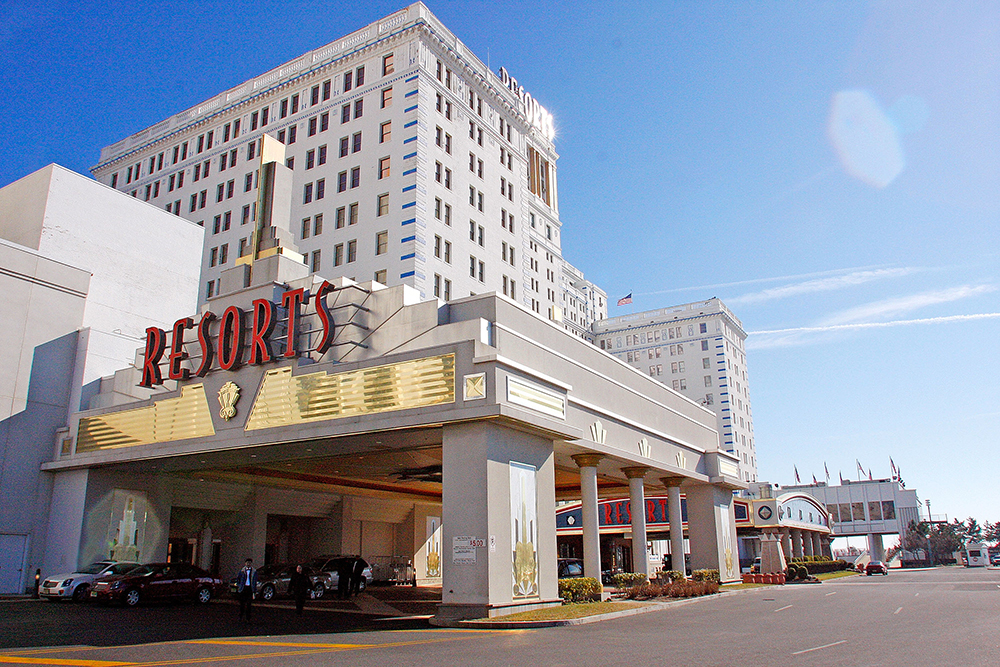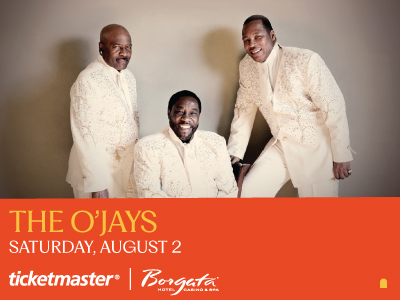By Bruce Klauber
Atlantic City’s past has not disappeared entirely. The Boardwalk’s grand hotels of yore may be long gone, but remnants of these iconic structures are still in use. And there is one hotel that is still standing, still very much open and operating, and still a vital part of the Boardwalk landscape 94 years after it was built.
Pieces of Dreams
The Chalfonte Hotel, on North Carolina and Pacific avenues, was first built in 1868. Construction began on the eight-story “modernized” version around 1900, and it opened its doors four years later.
Haddon Hall, originally called Haddon House, was first built across the street in 1869. It was rebuilt and remodeled through the years until the late 1920s. The combined Chalfonte-Haddon Hall complex, when completed, had a 1,000-guest capacity.
Fast forward to 1976 and Resorts International, which would become the city’s first hotel/casino two years later. Resorts purchased the two old hotels for the bargain price of about $2.5 million.
When construction began, Resorts decided to use about half of the 1,000 Chalfonte rooms for the hotel part of their “new” hotel/casino. Haddon Hall would be converted to a casino, as well as restaurants, the main showroom and shops.
Also still standing and still in use is Haddon Hall’s Ocean Tower, which houses the main casino floor as well as almost 500 rooms, spa, pool, and more retail dining spaces. Note to Margaritaville and Players Club casino customers: You’re gambling in a section of Resorts that was built in 1927.
In the late 1970s the Bally Corporation took control of the venerable Dennis Hotel, the Marlborough Hotel and the Blenheim Hotel. All had been around since the mid-1920s.
Although Bally’s demolished the Marlborough and the Blenheim, the Dennis Hotel was actually used as the hotel portion of Bally’s Park Place hotel/casino, which opened in 1979. Ten years later, a new hotel tower was built.
In 2008, the retail outlets that were housed between the Boardwalk and the Dennis were demolished, but the open plaza was restored and the renovated “Dennis Wing” still serves as a hotel.
The Holiday Inn and Howard Johnson hotel chains are hardly of the same historical significance as Haddon Hall or Dennis Hotel, but in the 1960s, in a sorely needed effort to modernize; those two chains, and at least six others came to Atlantic City to do business.
Located on Chelsea Avenue and the Boardwalk, the Holiday Inn opened a 400-room hotel, and Howard Johnson’s opened a 340-room structure between 1966 and 1968.
Here’s where things get a bit complicated: In 2008 the two hotels were combined and $100 million was spent on renovations. It opened as the Chelsea Hotel. There was a possible legalized gaming deal in the works for the Chelsea, but it fell apart in 2016 and the hotel closed.
The next year the Tropicana bought it from investor Carl Icahn, who held the mortgage. The Trop built a skyway connecting the Chelsea to the Trop and opened the “Chelsea Tower” in the summer of 2018.
The Tropicana also faced some singular issues when it was first built. In 1977 Ramada Inns bought the old Ambassador Hotel on the Boardwalk for $900,000. The plan was to turn it into a casino similar to the Trop’s Las Vegas operation. But Gov. Brendan Byrne didn’t like the idea of transforming old structures into new hotel/casinos.
The Trop had a novel solution. The old Ambassador was gutted down to the steel, which was then used as the superstructure to build the Tropicana as we know it. The Trop opened in 1981.

Still Standing
Prior to the construction of the Holiday Inn and Howard Johnson’s in the mid-1960s, the “newest” hotel on the Atlantic City Boardwalk was The Claridge. Built in 1930, the 24-story, 370-foot-high, 480-room hotel was dubbed “the Skyscraper by the Sea” by locals, and had an incredible and thriving history through the 1970s.
Marilyn Monroe, Martin Luther King, Jr., Mickey Mantle and Princess Grace of Monaco are among the many celebrities that stayed at the hotel. It also played host to Frank Sinatra, Dean Martin and friends when they visited Atlantic City to play the 500 Club.
When gambling was legalized in Atlantic City in 1976, a number of investors throughout the country believed that gaming in Atlantic City was like a “license to print money,” but only if they got into the Atlantic City hotel/casino market early enough. Given that The Claridge was still popular, still in good shape, and seemed to have the features needed to open a hotel/casino, a Connecticut investor named Frances D’Addario bought the property in 1977.
Two years later, D’Addario partnered with Del Webb, a real estate development firm with a wealth of experience in Nevada casinos. The first order of business was to add 200 rooms.
It took a few years to get a casino license because of Gov. Byrne’s continued insistence on tearing down old venues and building new hotel/casinos in their place. Del Webb ultimately prevailed and The Claridge opened as a casino in 1981.
I visited The Claridge often and stayed as a guest more than once. It was charming. Despite the renovations and the addition of a casino floor, it managed to retain the historic ambiance that made the hotel a classic.
Even though it had a 600-seat showroom that featured everyone from Aretha Franklin to Eddie Fisher, a swinging and jazz-focused lounge, and fine restaurants, the smaller venue had a hard time going up against the larger operations. In 2001, The Claridge merged with Bally’s and it became, in effect, an adjunct hotel for Bally’s. By 2009, work started on another major renovation valued at $20 million, but it didn’t help.
In the winter of 2012, The Claridge’s time as a casino was over. It continued to stay in operation as a 500-room hotel arm for Bally’s. A year later it was sold again to a Clearwater-based company called TJM Properties. That affiliation didn’t last long, and The Claridge became part of the Radisson chain in 2016.
For unknown reasons, The Claridge was unhappy with how Radisson was operating things and the partnership ceased a few years later. Since then, The Claridge has been operating independently with the charm, the legacy, and the legend intact. The reviews of the accommodations and the amenities have been wonderful, and business continues to be good. And for the 94-year-old “Skyscraper by the Sea,” that’s not bad.
From the Readers
From Jerry Blavat’s life partner, Keely Stahl: “Thank you for this beautiful tribute, written with love and respect. You were a true friend and champion to Jerry over the years and I’ll always love you for that, and because I know how much he respected you. One thing: Memories was called the Elbow Room before Jerry bought it.”
Edited comments from Dr. Agnes Orsatti, daughter of Arnold Orsatti: “While your article certainly highlighted the accomplishments of my dad and brother, Arnie, in a wonderful way… I hope you do not mind my effort to set the record straight about my dad.
“My mother, father and brother devoted themselves to the family business, and because of their hard work, the restaurant lives on in the memory of the many customers who were welcomed there over the years.
“Your article included a reference to Orsatti customers who had ‘unsavory connections.’ While I remember that well-known South Philadelphians like Angelo Bruno were customers during the summer, the restaurant was open to everyone, including my father’s closest friend at the shore, Senator Frank Farley, who ate there every Friday night.
“You write that there were ‘some allegations and rumors’ of my father’s ‘connections to organized crime figures through the years.’…Nothing could be further from the truth. My brothers and I had many conversations with my father over the years and he was clear about his feelings regarding organized crime. He kept his distance from people engaged in such activities and was sorry that Italians in this country were involved in illegal gambling activities and worse. He felt that men like that cast suspicion on legitimate business owners who were Italian American. And obviously he was right since, 20 years after his death, your article mentions allegations and rumors that have no basis in fact.”
Bruce Klauber is the author of four books, an award-winning music journalist, concert and record producer and publicist, producer of the Warner Brothers and Hudson Music “Jazz Legends” film series, and performs both as a drummer and vocalist.












